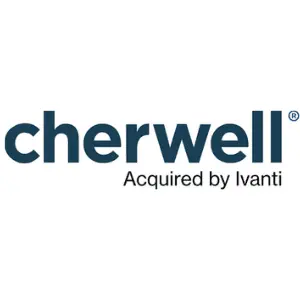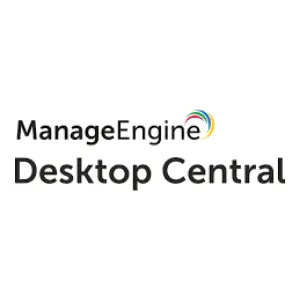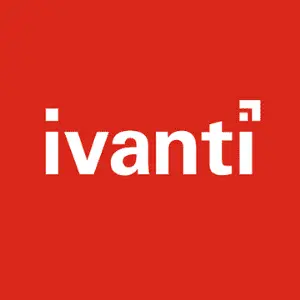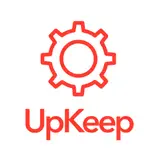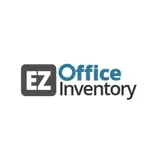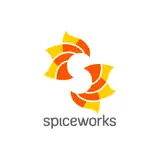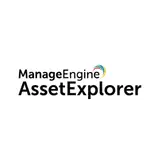- Free Version: Available for teams of up to 10
- Pricing: Premium plan $24/month (with free 30-day trial period)
- Platforms supported: Available on mobile app (iOS and Android) or a web-based software
Why use SafetyCulture (formerly iAuditor)?
SafetyCulture is best used by teams who work together to effectively manage computer inventory. The award-winning software, SafetyCulture is a versatile mobile application available on iOS, Android, Mac, or PC that IT administrators can use when acquiring, maintaining, and deploying computer hardware and software in their organization.
Used by industry leaders to maintain compliance with industry standards and regulations, SafetyCulture can help businesses through powerful customizable digital checklists and forms, timely maintenance checks, real-time corrective actions, secure recordkeeping, and insightful analytics.
Features:
- Customizable mobile maintenance checklists and other best practice templates available for free from the public library
- Administrative controls for inspections, actions, reports, and analytics
- Generate reports in web, PDF, and other file formats
- Real-time corrective actions assignment and status updates
- Scheduled reminders and automated notifications for maintenance and other tasks
- Secure data collection and insightful dashboard for analytics
- Connect to sensors for automation of IT asset monitoring
- Integrate with existing systems via API
- Global customer support 24/5
- Competitive pricing for a computer inventory management software
- Dedicated account manager (Premium and Enterprise)
Why use Solarwinds Patch Manager and Service Desk?
While Patch Manager offers system security and systems update management for the user’s IT environment, Service Desk helps IT administrators manage computer hardware location, configuration, and use. Both provided by SolarWinds, Patch Manager and Service Desk can help cover the requirements of software and hardware for computer inventory management.
Patch Manager automates patching reports, making tracking and logging of system updates more convenient for the IT administrator. Like certain computer inventory management software, Patch Manager can also integrate with other applications and works with Microsoft Windows Server Update Services (WSUS) and System Center Configuration Manager (SCCM) for easier monitoring of software updates.
Service Desk can help manage multiple PCs even if they are in different locations. As an IT asset management software, it also helps track other IT assets for the convenience of the IT administrator.
Features:
- Manage patch deployment and ensure that all patches are deployed properly across all systems
- Easier monitoring and deployment of the latest software updates
- Generate status reports of patch deployment
- Automate discovery of hardware for real-time inventory of PCs and other IT equipment
- Better address IT service desk tickets because of visibility on asset information
- Free Version: None
- Pricing: $19.00 per month
- Platforms supported: Available on Web, Desktop (Mac, Windows, and Linux) and Mobile Devices (iOS and M)
Why use Cherwell?
Cherwell Asset Management by Ivanti is a hardware and software asset discovery tool that helps IT administrators know which IT assets are currently deployed, to whom, and if they’re already licensed by reconciling discovered assets with data from purchasing.
Features:
- Allows tracking of hardware and software lifecycles
- Pinpoint unknown or newly installed applications
- Helps you be aware of license risks
- Reconcile current inventory of hardware and software with purchasing
- Pricing of Cherwell Asset Management is available upon inquiry
- Free Version: Available
- Pricing: Starts at $189.00 per month
- Platforms supported: Available on Web, Desktop (Windows), ang Mobile Devices (iOS and Android)
Why use Desktop Central?
Desktop Central’s IT inventory management solution not only covers hardware and software inventory management but also provides what it calls out-of-the-box network inventory reports that help users get information on their network inventory.
Features:
- Establish network security through automatic uninstall of prohibited applications
- Automate notifications for hardware and software-related tasks
- Gather inventory data through systems scanning
- Manage license compliance
- Produce customized reports
Why use Ivanti?
Ivanti offers functionality not only for hardware and software management but also for service desk, touting itself as an all-in-one-solution for users of the platform.
Features:
- Visibility of IT assets including hardware, software, server, cloud, etc.
- Manage IT spend, track asset age and current value
- Barcode scanning capable
- Manage vendor information
- Manage IT assets using mobile app
- Free Version: Not available
- Pricing: Not available
- Platforms supported: Available on Web, Desktop (Mac & Windows) and Mobile Devices (iOS and Android)
Why use Asset Panda?
Asset Panda is a cloud-based software that offers asset tracking and maintenance management. Asset Panda provides you with comprehensive, up-to-date records of your assets. It aims to help companies save money by identifying and eliminating technology that no longer supports your teams and end users. The software is compatible with windows, and mac devices and can be used from anywhere with real-time data.
Features:
- Barcode generation and scanning
- Tracking of compliance, service contracts, software licenses, repairs, and maintenance
- Asset assignment to enforce accountability
- Provides a full lifecycle history for better reporting, visibility, and forecasting
- Submit IT tickets to speed up addressing issues
- Accessible online or through a mobile app
- Free Version: Information available upon request
- Pricing: Information available upon request
- Platforms supported: Available on Web and Mobile Devices (iOS and Android)
Why use UpKeep?
Upkeep is a software solution designed to serve as a one command center for maintenance and reliability. It is mobile-first software that allows workplaces to automate asset management, property maintenance, facility maintenance, and inventory management.
Features:
- Create, manage and update work requests for repairs and maintenance
- Schedule preventive maintenance work in calendar view
- Create and use digital maintenance checklists for routine inspections and more
- Track operational downtime remotely
- Time and cost tracking
- Barcode generation and scanning
- Free Version: Available
- Pricing: Starts at $45.00 per month
- Platforms supported: Available on Web, Desktop, and Mobile devices
Why use EZOfficeInventory?
EZOfficeInventory is a cloud-based software that can be used both in web and mobile app. Their solution simplifies operational workflows. Allowing organizations to track and manage assets across different locations, conduct seamless audits, and manage reports on the go.
Features:
- Barcode and QR code generation and scanning
- GPS tracking
- API integration with REST-based systems
- End-to-end asset lifecycle management
- Availability calendar
- Digital audits for regular monitoring
- Service tickets and triage
- Maintenance scheduling and alerts
- Free Version: Available
- Pricing: starts at $45.00 per month
- Platforms supported: Available on Web, Desktop, and Mobile Devices
Why use Spiceworks?
Spiceworks is a free cloud based help desk software dedicated to aid system administrators and IT professionals in managing tickets, providing customer support, tracking performance, and closely monitoring IT incidents and abrupt changes in the network.
Features:
- Track incidents using user tickets with help desk
- Manage company assets through devices IPs
- Monitor critical IT infrastructure
- Track vendor contracts
- IP lookup for troubleshooting
- Subnet calculator
- Website down checker
- Free Version: Available
- Pricing: Available upon request
- Platforms supported: Available on Web, Desktop, and Mobile Devices
Why use AssetExplorer?
AssetExplorer by ManageEngine is a web-based IT asset management software designed to help system administrators and IT professionals in managing and monitoring assets. This software solution enables organizations to ensure discovery in a network, manage software & hardware assets, ensure software license compliance, and track purchase orders and contracts. Software is discoverable and compatible with Windows, Linux, and macOS assets in your network and easy to install.
Features:
- Asset life-cycle from procurement to disposal
- Software license management
- Generate detailed reports and schedule delivery to inbox
- Track hardware and software assets using AssetExplorer mobile app for IOS and Android
- Network range scans
- Free Version: Available
- Pricing: $795.00 one time
- Platforms supported: Available on Web, Desktop, and Android devices
What is a Computer Inventory Management Software?
A computer inventory management software is a tool used by Information Technology (IT) administrators and managers to manage the storage, upkeep, tracking, and monitoring of computer hardware and software used by organizations for their operations.
What’s the Difference Between Computer Inventory Management and Other Types of Inventory Management?
Computer inventory management may sound the same as other types of inventory management but there are crucial differences.
| Computer Inventory Management | Other Types of Inventory Management System |
| IT administrators and IT managers are responsible for computer inventory management. | Depending on the industry and intent of storage, inventory management is the responsibility of inventory managers or warehouse managers. |
| Computer inventory management involves the secure storage and maintenance of both computer hardware and software. | Inventory management usually involves stocks of goods intended for retail. Another type is the inventory of assets that companies use in operations. |
| Computer hardware and software are monitored to ensure that their current state and exact designation is known and that they are up-to-date, secure, and in good working condition. | Stocks for retail need to be constantly replenished to meet consumer demand while company assets in inventory are monitored and maintained. |
What are the Challenges?
A responsibility crucial in helping keep a business operational year-round, computer inventory management entails challenges that IT administrators face daily. Here are some of those challenges in computer inventory management:
Asset Tracking
Computer inventory management involves knowing about each computer hardware or software’s exact physical or virtual location as well as current status. The larger a business, the more complex operation becomes, and the more computer hardware and software will be required to keep it running. All these computer assets need to be accounted for and tracked by IT administrators, a responsibility that can be easier to pull off using the right software.
Recordkeeping
Recordkeeping can be simple and straightforward—recording computer names, models, serial numbers, batch numbers, units, which ones are not in use, and designated users—or challenging and complex depending on the size of the organization and nature of operations. Recordkeeping can be particularly difficult if done using paper, a mode of recordkeeping that is hard to maintain if a business intends to grow or has a complex operation that requires speed and efficiency that only digital recordkeeping can provide.
Maintenance
Not only do computer hardware and software status and location need to be known and recorded, IT administrators need to ensure that computers and their components are properly maintained in order for them to continuously perform at the optimum level. The quality of hardware needs to be able to meet the demands of operations while the software needs to be compatible with existing hardware and, ideally, the most current version. Using a platform that can be used to properly record and track information, as well as automate reminders and notifications for tasks, can help IT administrators know when maintenance is due.
How to Manage Computer Inventory?
With all the multiple tasks and responsibilities involved in managing computer inventory, it pays to step back and check what are the most basic things to check and see how it can be done more effectively. Here are some tips on how to manage computer inventory:
Get the Tool That Works Best for you
Whether a business is small, medium, or at the enterprise level, getting the ideal computer inventory management software for the organization is crucial in helping make responsibilities more manageable for IT administrators. If you are looking for a platform that is mobile, has secure recordkeeping, is cloud-based and paperless, automates notifications for maintenance and other tasks, integrates with other software, and can be used by the entire IT team, a mobile platform like SafetyCulture is the best option to help IT management ensure that computer inventory is managed efficiently.
Build a Responsible Team
Computer inventory management is not only all about choosing the best tools and systems that are going to be ideal for your business but also about selecting and training the right personnel who can be trusted with important IT tasks and responsibilities. Deployed with the right training using effective training tools, IT professionals can help IT administrators take on responsibilities that contribute to effective computer inventory management. An effective IT help desk software would be ideal to manage and prioritize responsibilities.
Use Digital Checklists and Inventory Forms
Gone are the days when paper forms were enough for different types of inventory management. When you need to secure and retrieve information fast and at any time, you need to consider if you are using reliable tools for the job. Digital checklists and forms using an app like SafetyCulture can give you access to a variety of best practice checklists and forms used in multiple industries for computer acquisition, maintenance, and rollout. And the best part is you can download and use any of them for free!
Use SafetyCulture
The nature of computer inventory management involves challenges but tackling the challenges need not be difficult for IT administrators who are using the right software. With SafetyCulture as the computer inventory management software, IT administrators can use their mobile devices or computers to capture and record hardware and software information, check equipment quality and performance, inspect storage facilities, use digital checklists and forms, and submit reports on site. SafetyCulture can also integrate with existing platforms for a more seamless computer inventory management.


